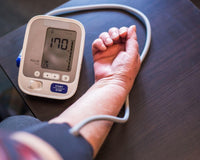Hair loss refers to the recession or loss of hair from any part of the body. In children, hair loss is rare, but can occur for a few reasons including infection, hair pulling, nutrient deficiency and ringworm. In the following article we discuss hair loss in children and answer questions like what causes hair loss in children.
What is Hair Loss?
Hair loss refers to the recession or loss of hair from any part of the body, most commonly the scalp of the head. Hair loss can be the result of aging, hereditary conditions, hormonal changes, or medical conditions. Although hair loss is more common in men due to male pattern baldness, many women also experience some form of hair loss during their life.
Hair Loss in Children
It is common for adults to experience hair loss, but hair loss in children can cause alarm and panic. However, contrary to what some may believe, hair loss is not uncommon in children, and can usually be effectively treated through non-invasive methods. Hair loss in children may take a different pattern than hair loss in adults, happening suddenly rather than over a period of many years. In children, hair loss is often caused by infection or hair-pulling, and can be reversed fairly quickly.
What Causes Hair Loss in Children?
In children, hair loss is most often caused by fungal or bacterial infection, alopecia areata, hair pulling, or ringworm. Children with cancer who undergo chemotherapy may also lose hair. Most hair loss in children can be treated and reversed through improved hygiene and common medications.
Alopecia Areata
Alopecia areata is a common form of hair loss that affects both children and adults. It is an autoimmune condition that results in inflammation and loss of hair, though hair loss is usually not permanent.
Alopecia areata has two peaks of onset, one during childhood and one during adulthood. In most patients, hair loss from alopecia areata lasts less than a year, and hair regrows quickly after this time. However, for about 5% of children, the disease progresses to alopecia totalis, resulting in total loss of hair. The most common side effect of alopecia areata is the appearance of smooth, round bald patches on the head. In children, alopecia areata can also cause pitting and ridging of the nails.
Traction Alopecia
Traction alopecia is a form of acquired hair loss caused by repetitive tension on the scalp and hair. It can be caused by tight ponytails, abrasive hair washing techniques, or intentional pulling. Traction alopecia is often seen in kids who pull their hair out of habit or frustration.
Tinea Capitis (Ringworm)
Tinea capitis, often referred to as scalp ringworm, is a common infection that leads to the appearance of itchy, bald patches of hair on the head and loss of hair from the top of the head. Scalp ringworm mostly affects children between the ages of three and seven. Tinea capitis is an infection present in most parts of the world, but it is especially prevalent in warm, human environments. In children, it is usually spread through contact sports or touching an animal infected with ringworm.
Hair Pulling
Serious cases of hair pulling may be diagnosed as trichotillomania, a condition characterized by compulsive pulling of hair in children. Some kids with trichotillomania pull their hair when they are frustrated; others may not realize they are doing it.
Kids with trichotillomania may have patches of missing or broken hair across their scalp. Some children also eat the hair they pull out, which can lead to sickness and serious stomach problems. Hair pulling can be treated through cognitive behavior therapy, which teaches kids to become more aware of their hair pulling and its negative effects on their bodies. Fortunately, most hair will grow back even if it has been forcefully pulled out.
Nutrient Deficiency
The health of a child’s immune system and overall body plays a key role in maintaining healthy hair. Hair loss in a child may be the result of an unbalanced or unhealthy diet. Essential fatty acids obtained from food help to maintain hair health and consistency. When kids do not get enough essential vitamins and nutrients, their hair can begin to grow thin and fail out. Foods that contain high amounts of carbs, refined sugar, and dairy may be detrimental to overall hair health.
Scalp Injury
An injury to the scalp, such as a burn or significant hit to the heat, can damage the hair follicles and lead to hair loss. Scalp injuries that result in hair loss must be treated immediately; some injuries can impact the underlying structures of the scalp and cause permanent hair loss.
Chemotherapy
Hair loss is a common side effect of chemotherapy—a treatment option often used to stop the growth of cancer cells. Chemotherapy targets cells that rapidly divide in an effort to eradicate cancerous cells as quickly as possible. Hair follicles, the structures from which hair grows, are some of the fastest-growing cells in the body. As a result, hair cells often die as a byproduct of chemotherapy, resulting in hair loss.
Children’s Hair Loss Treatments
Fortunately, most children who experience hair loss can receive treatment easily and quickly. For younger children, treatment options consist of strong corticosteroid ointments and creams which should be applied to the area where hair loss is most severe. Teenagers who may be more responsible and motivated can opt for shampoos and corticosteroid injections instead. Medications like finasteride may also be useful in treating hair loss, but should only be used under adult and doctor supervision.
Hair Loss in Children Summary
Hair loss in children can be caused by infection, pulling hair, nutrient deficiency, injury, and a hair condition called alopecia areata. It is usually not serious, but can lead to permanent hair damage in extreme cases.
Most children who lose hair can be treated quickly and easily. Common hair loss treatments for children include shampoos and corticosteroid ointments. Prescription drugs like finasteride may also be administered under doctor supervision.








